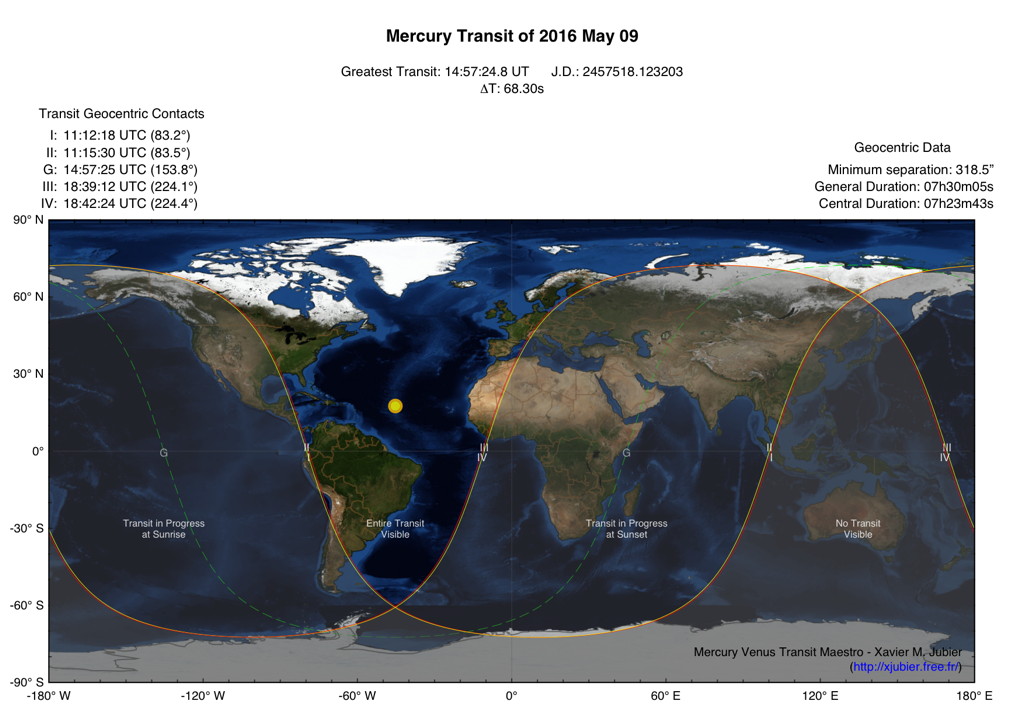|
As seen from Earth, only transits of the inner planets Mercury and Venus are possible. Planetary transits are far more rare than eclipses of the Sun by the Moon. On average, there are 13 transits of Mercury each century. Nowadays, all transits of Mercury fall within several days of May 8 and November 10. During November transits, Mercury is near perihelion and exhibits a disk only 10 arc-seconds in diameter. By comparison, the planet is near aphelion during May transits and appears 12 arc-seconds across. However be aware that the planet Mercury is too small to be seen with the naked eye in front of the Sun. It’s therefore essential to magnify the image using a telescope or any appropriate device to detect the black ball pinned in the foreground of the photosphere of our star.
On the 2016 Transit of Mercury visibility map you can see that all the transit was visible from western Africa, the Canary Islands and northern Chile where the weather prospects are the best in May. This is why I finally observed once again from the Atacama desert in northern Chile. In about seven and a half hours time the planet Mercury crossed the solar disk from east to west. It was the first transit of Mercury since the previous one in November 2006 and was visible at least partially from Europe, Africa, the Americas and part of Asia. The next Mercury transit will occur in November 2019.
There were a few outreach initiatives to which occasional observers, students, teachers, could participate. For example the Mercury transit project. Do not hesitate to join those.
Find out if you were able to see Mercury during the May transit by using this Mercury transit calculator.
|


 2016 May 9 Transit of Mercury
2016 May 9 Transit of Mercury





